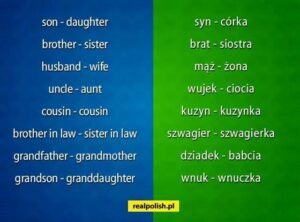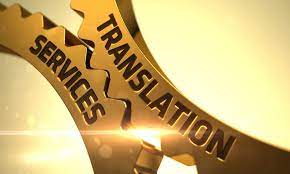An Overview of the Swedish Language’s History
Swedish Language is fantastic.
If you’re interested in learning Swedish, this article provides valuable insights to motivate you on your language learning journey. Learn about Swedish’s history, grammar, pronunciation, and current usage. What are the chances? Perhaps this will serve as a motivator for you to begin learning Swedish as well.
The Basics of the Swedish Language
Sweden’s official language is Swedish. Around ten million people speak Swedish throughout the world. In Sweden, 8 million people speak it fluently. However, there are Swedish-speaking populations in Finland, Norway, Denmark, and other Baltic countries. After Finnish, Swedish language is the second official language in Finland.
Family of Swedish Languages
Swedish is a language that belongs to the North Germanic language family. As a result, it is connected to Danish, Norwegian, Icelandic, and Faroese languages. Nevertheless, it is closer to Danish and Norwegian than the other two Scandinavian languages because it is a continental
Scandinavian language.

Some people believe that all Nordic languages are dialects of the same vocabulary. To some extent, this is correct, as Danish, Norwegian, and Swedish are mutually understandable. However, we consider them to be distinct Swedish language.
The Swedish Language’s History
Swedish has Proto-Germanic origins. This language split into three branches by the eighth century CE: West-, East-, and North-Germanic. The latter is where the Swedish comes from.
Old Norse, the Vikings’ language, evolved from North Germanic. Following the division of this language into Insular (Icelandic, Faroese) and Continental (Swedish, Danish), we are almost at the point where Swedish is considered its language. For a language’s origin, that’s a lot of change.
Swedish was known as Runic Swedish language in its early years. This is because it was written in runes. These may seem familiar from traditional Viking texts.
Swedish folklore
Sweden adopted the Latin alphabet when it became a Christian state in 1225. This marks the beginning of the Old Swedish era. The Hanseatic League had a tremendous impact on the language throughout this period.
The Hanseatic League was an organization of merchants. On the Hansa commerce route, Low-German speaking villages developed across the Baltic and Scandinavia. Swedish language was included in this. As a result of these settlements, Low-German had a significant impact on Old Swedish. You may claim that the German lexicon was likewise… exchanged.
Swedish Transition Between the Old and the New
The grammar of the Swedish grew easier as the language progressed. There have initially been four cases, but they were reduced to only two. As the three genders combined, they split into two. In addition, the verb system became less complicated.
Swedish culture in the present day
Modern Swedish began with the printing of the first Swedish language Bible in the 16th century. Swedish writing became standardized as a result of this Bible. The language grew increasingly standardized in the 19th and 20th centuries.
Dialectal distinctions vanished as a result of migration inside Sweden. Thus, by the 1906 Swedish Spelling Reform took place, the language had evolved into something quite similar to what we know today.
more like this, just click on: https://24x7offshoring.com/blog/

Dialects of Sweden
Standard Swedish is the most frequently spoken language in Sweden. Because of the country’s sheer vastness, regional dialects still exist. However, these dialects are very similar to one another. The accent is the only distinguishing Swedish language feature. As a result, everyone in Sweden and in Swedish communities outside the nation understands each other rather well.
The Swedish Letters
There are 29 letters in the Swedish alphabet. Twenty-six of them are the standard Latin letters that we are all familiar with in English. However, Swedish also added three more letters. These are even though they appear to be variants of A and O, they are distinct letters in their own right.
Vowels in Swedish
In Swedish language, there are nine vowels. Each one may be said in two distinct ways: long or short. Before a long consonant, vowels are short (two or more consonants together). Before a short consonant (one consonant), before another vowel, or after a word, vowels are lengthy.
• A: long, like my father, but short, like I have to
• : similar to home, but without the glide
• : like air, but shorter than getting
• E.g., long as an aircraft, short as a get
• I: lengthy as a meeting, brief as a little in Swedish language.
• O: like food, it’s lengthy, but it’s also brief.
• : like the German shön, but shorter than the French le
• U: like food, but shorter than ultra.
• Y: long (as in “eey”), short (as in “ey”)
Consonants in Swedish
The Swedish language has a total of 20 consonants. Although most of them are similar to English, there are a few critical distinctions in pronunciation to be aware of.

• Before e, I and y, C equals “s.” C Equals “k” everywhere else in Swedish language
• G is never soft like a gem, but always hard like get. G = “y” before e, I y, ä, or ö (like yes)
• With your tongue positioned against your upper teeth, say D, T, and N.
• “J” equals “y” (as in yes)
• = “sh” before e, I y, ä, ö, ö, ö, ö, ö, ö, ö, ö, ö, ö, The letters a, o, u, and K come before the letters a, o, u, and K. “k” = (like kind)
• The letter R is rolled, just like in Spanish.
• It’s always “s” instead of “z” as in has.
Digraphs in Swedish
Consonant combinations that represent one sound are called digraphs. So, even though you see two independent letters, you only have to speak one sound when you pronounce them. You may quickly master Swedish language pronunciation once you know these letter combinations.
Continue Reading, just click on: https://24x7offshoring.com/blog/
The Swedish language is a North Germanic language spoken by about 10 million people as a native language, primarily in Sweden and Finland. It is also spoken by smaller communities in Norway, Denmark, and Estonia.
The Swedish language has a long and rich history. It is descended from Old Norse, the language spoken by the Vikings. Old Norse was a highly inflected language, with a complex system of noun declensions and verb conjugations.
Swedish began to diverge from Old Norse in the 13th century. This was due to a number of factors, including the influence of Low German, which was the language of trade and commerce in the Baltic Sea region at the time.
In the 16th century, the Swedish language was standardized by the Swedish Academy. The Swedish Academy is a body of scholars who are responsible for maintaining the Swedish language and its vocabulary.
Swedish has undergone a number of changes since the 16th century. The most significant change has been the simplification of the inflectional system. Swedish nouns and verbs are now much less inflected than they were in Old Norse.
Swedish has also borrowed a large number of words from other languages, including Latin, French, and English. This has made Swedish a more international language.
Today, Swedish is a vibrant and dynamic language. It is the official language of Sweden and Finland, and it is spoken by a growing number of people around the world.
Here are some of the key events in the history of the Swedish language:
- 13th century: Swedish begins to diverge from Old Norse.
- 16th century: The Swedish Academy is founded.
- 19th century: The Swedish language is standardized.
- 20th century: Swedish borrows a large number of words from other languages.
- 21st century: Swedish becomes a more international language.
The Swedish language is a fascinating and complex language with a long and rich history. It is a language that is constantly evolving, and it is sure to continue to change in the years to come.
Swedish grammar has its own unique features and structures. Here are some key aspects of Swedish grammar:
- Nouns and Gender: Swedish nouns are classified into two grammatical genders: common gender (en words) and neuter gender (ett words). Unlike many other languages, Swedish does not have grammatical gender agreement with adjectives or definite articles.
Example:
- en bok (a book)
- ett hus (a house)
- Definite and Indefinite Forms: Swedish uses definite and indefinite forms of nouns. The definite form is formed by adding a suffix (-en, -n, -et, -t) to the noun, while the indefinite form remains unchanged.
- en bok (a book) / boken (the book)
- ett hus (a house) / huset (the house)
- Adjectives: Swedish adjectives agree with the noun they modify in gender and number. They can take different endings depending on the noun they are associated with.
Examples:
- en stor bok (a big book)
- ett stort hus (a big house)
- stora böcker (big books)
- stora hus (big houses)
- Verb Conjugation: Swedish verbs are conjugated based on tense, mood, and subject. The present tense often has different endings depending on the verb class and the subject pronoun.
Examples:
- jag äter (I eat)
- du äter (you eat)
- han/hon äter (he/she eats)
- vi äter (we eat)
- ni äter (you eat)
- de äter (they eat)
- Verb Particle and Word Order: Swedish has a feature called verb particle, where certain verbs are combined with prepositions or adverbs to form new meanings. The verb particle is separated from the main verb in questions and subordinate clauses.
Example:
- Han tar på sig jackan. (He puts on the jacket.)
- Tar han på sig jackan? (Does he put on the jacket?)
- Plurals: Swedish plurals are formed by adding -ar or -er to the noun, or by changing the vowel in the stem. There are also irregular plural forms.

Examples:
- en bok (a book) / böcker (books)
- en man (a man) / män (men)
These are just a few aspects of Swedish grammar. Swedish also has specific rules for pronouns, prepositions, word order, and more. It’s important to study and practice these grammar rules to develop a good understanding of the language.
